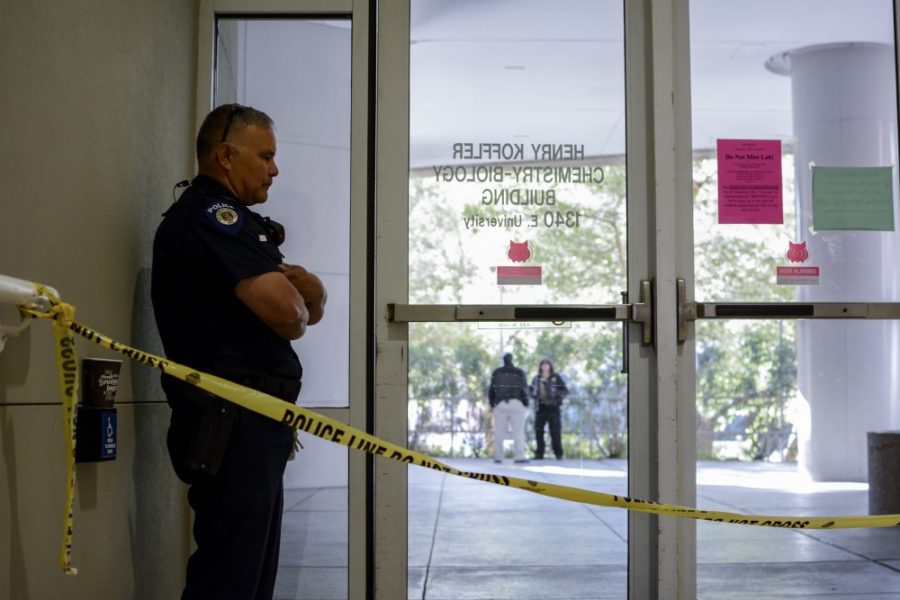Students and parents concerned about the dangers present on college campuses can look to UAlert, the university’s emergency text messaging alert service, for notifications about immediate safety issues.
The alerts are administered by members of the UA’s Campus Emergency Response Team to provide safety information to any students, family members, faculty and staff that sign up to receive the alerts.
READ: UA officials review the UAlert system
Melissa Vito, senior vice president for student affairs and enrollment management and senior vice provost for academic initiatives and student success, is the chair for the UACERT.
Vito said UAlerts provide information on issues that may impact the UA community, ranging from power outages and street closures to violent crimes.
“It cuts across a broad array of potent topics, but the goal of it is to try to give members of the community some brief information to give them a little bit more knowledge or a stronger sense of safety,” Vito said.
READ: Column: UA consistently failing the students it has the responsibility to keep safe
Mario Hernandez, a math and computer science sophomore, said he thinks UAlert is a valuable tool for ensuring students’ safety on campus.
Hernandez said he was grateful for UAlert last year when it notified him of a gas leak near his residence hall. “I took the long way to class instead of where the gas was, and I wouldn’t have known without UAlert,” Hernandez said.
University of Arizona Police Department Chief Brian Seastone said the alerts may also be utilized for more urgent threats, as they were in May when a shooting occurred at the Bio5 building.
“Once we got the information and confirmed the shooting, a message went out,” Seastone said.
Seastone said UAlerts also contain instructions for how community members should proceed in avoiding dangers as well as updates on the actions taken by police.
The UAlert system was first implemented in response to the 2002 shooting at the College of Nursing, said Dean of Students and Assistant Vice President for Student Affairs, Kendal Washington White.
“Prior to that incident, there was no central way to notify the campus community of emergencies occurring on campus,” White said.
White said she was working on campus during the time of the shooting and only learned of the incident when a colleague living in Texas called to make sure she was okay.
“My friends and colleagues across the country knew what was going on and I had no idea,” White said.
Though the UAlert service is supposed to make disseminating information to the campus community more efficient, the system has not been entirely free of controversy.
Some students were upset last year when a suicide occurred on campus in the Koffler building because they weren’t notified by UAlert, according to White.
White said the decision not to send out an alert came from the fact that data shows that reporting suicides can sometimes inspire other suicides.
“It was decided in conjunction with our counseling center not to send out a UAlert because no one was in danger necessarily and it wasn’t an emergency,” White said.
White said that the upset over a lack of alerts following a shooting close to campus in February caused them to reevaluate their borders for sending out UAlerts.
“What we decided to do is expand it, because if something happens right across the street from our campus property, I think people still need to know,” White said.
Vito said she recommends students sign up for UAlert as well as download Livesafe, a mobile app that provides students with additional safety tools, such as the ability to anonymously report tips to UAPD or allow a friend to track their location while they walk home.
“It takes multiple things to help keep a campus safe and help students feel safe,” Vito said, “There isn’t any one thing that’s going to completely ensure 100 percent safety, but we need a variety of different ways that we address it.”
Follow Meredith Morrissey on Twitter.









